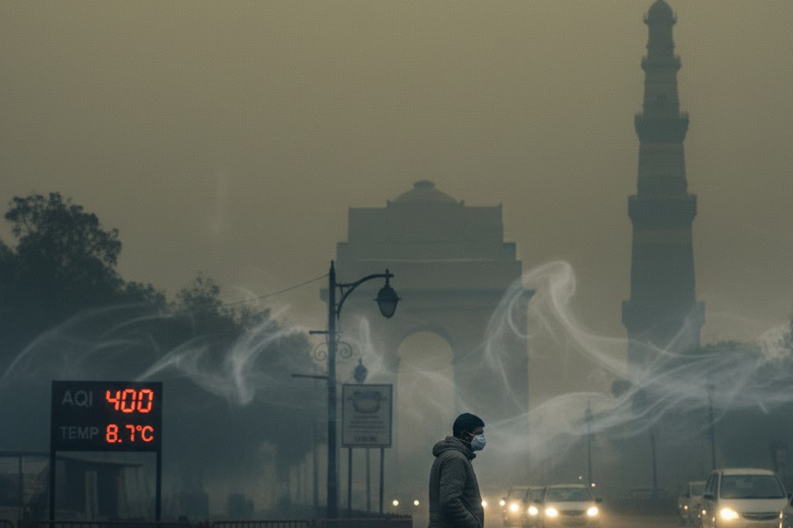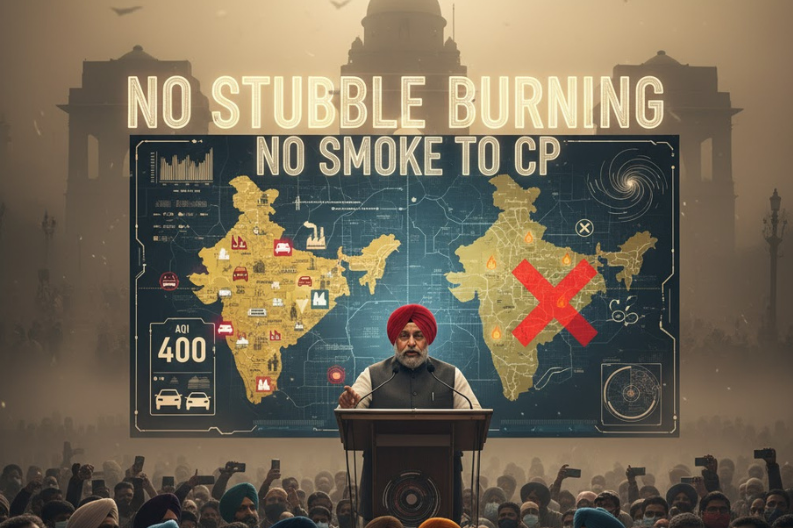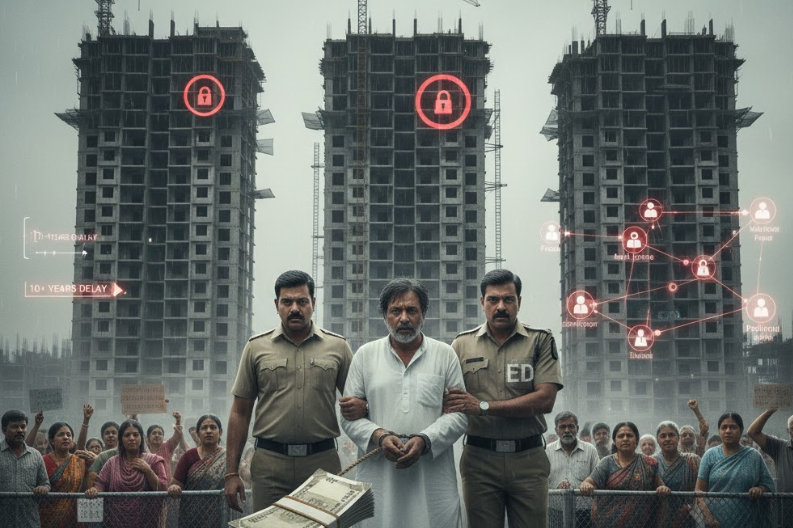In the national capital, Delhi struggles with Heavy Air Pollution and cold weather as both pollution levels and temperatures dropped sharply on November 20. The Air Quality Index (AQI) touched a dangerous 400 at 6 AM, showing severe pollution. Meanwhile, the temperature fell to around 11°C, creating difficult conditions for residents across the city.
According to the India Meteorological Department (IMD), the poor air quality may continue until November 21 and possibly longer. Even though the maximum temperature stayed near 27°C, experts expect a further drop of one to two degrees in the coming days. Because of this, mornings until November 23 may see shallow to moderate fog, lowering visibility and increasing the feeling of cold.
Delhi’s weather has shown clear daytime skies, but nights have turned much colder. Since November 15, minimum temperatures have fallen below 10°C. This is the earliest time in over a decade that November temperatures dropped to single digits. On November 20, the temperature hit 8.7°C, making it the coldest November night in three years. Most areas reported night temperatures between 9°C and 11°C, while daytime highs stayed between 24°C and 27°C.
IMD scientists say the quick drop in temperature happens because clear skies allow heat to escape at night. Additionally, cool northwesterly winds continue to blow across the plains, pushing temperatures even lower. Forecasts for November 25 show clear skies with fog in the morning, and maximum temperatures between 24°C and 26°C. Minimum temperatures may fall to around 9°C or 10°C.
Meanwhile, the Commission for Air Quality Management has enforced Stage III of the Graded Response Action Plan (GRAP). As a result, non-essential construction work has been stopped. Moreover, only selected vehicles with BS-3 petrol and BS-4 diesel standards can travel on the roads. These steps aim to reduce emissions and control pollution levels.
Doctors across Delhi report a sharp rise in patients suffering from breathing problems due to the severe pollution. Health experts advise residents to wear N95 masks, use air purifiers indoors, and avoid stepping out during early morning hours when pollution mixes with fog. Children, senior citizens, and people with health issues must take extra precautions to stay safe during this weather.
Delhi often faces pollution in winter because emissions from vehicles, industries, and construction get trapped close to the ground due to temperature inversion. This effect becomes stronger at night as cold air forms a heavy layer that prevents pollutants from rising. Because of this, the city struggles every year with poor air quality.
To stay safe, residents should monitor pollution levels, follow health guidelines, and reduce outdoor activities when possible. Community efforts, awareness, and responsible actions can help reduce pollution in the long term.
In conclusion, Delhi struggles with Heavy Air Pollution and cold weather, and residents must stay informed, take precautions, and support actions that help the city work toward cleaner air and safer living conditions.



